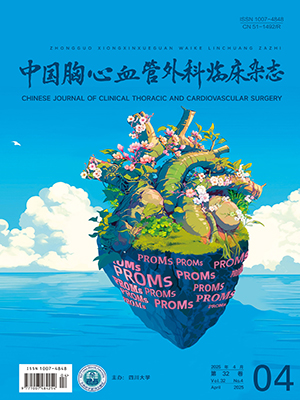| 1. |
Yancy CW, Jessup M, Bozkurt B, et al. 2017 ACC/AHA/HFSA focused update of the 2013 ACCF/AHA guideline for the management of heart failure: A report of the American College of Cardiology/American Heart Association Task Force on Clinical Practice Guidelines and the Heart Failure Society of America. Circulation, 2017, 136(6): 137-161.
|
| 2. |
Cremer P, Hachamovitch R, Tamarappoo B. Clinical decision making with myocardial perfusion imaging in patients with known or suspected coronary artery disease. Semin Nucl Med, 2014, 44(4): 320-329.
|
| 3. |
Partington SL, Kwong RY, Dorbala S. Multimodality imaging in the assessment of myocardial viability. Heart Fail Rev, 2011, 16(4): 381-395.
|
| 4. |
杨彦松. 存活心肌数量预测冠状动脉旁路移植术后左心室射血分数改善和左心室容积减小的价值. 苏州大学, 2016.
|
| 5. |
Peovska I, Maksimovic J, Vavlukis M, et al. Functional outcome and quality of life after coronary artery bypass surgery in patients with severe heart failure and hibernated myocardium. Nucl Med Commun, 2008, 29(3): 215-221.
|
| 6. |
Serruys PW, Morice MC, Kappetein AP, et al. Percutaneous coronary intervention versus coronary-artery bypass grafting for severe coronary artery disease. N Engl J Med, 2009, 360(10): 961-972.
|
| 7. |
Farkouh ME, Domanski M, Sleeper LA, et al. Strategies for multivessel revascularization in patients with diabetes. N Engl J Med, 2012, 367(25): 2375-2384.
|
| 8. |
Frangogiannis NG, Shimoni S, Chang SM, et al. Active interstitial remodeling: An important process in the hibernating human myocardium. J Am Coll Cardiol, 2002, 39(9): 1468-1474.
|
| 9. |
Bonow RO, Maurer G, Lee KL, et al. Myocardial viability and survival in ischemic left ventricular dysfunction. N Engl J Med, 2011, 364(17): 1617-1625.
|
| 10. |
Shah BN, Khattar RS, Senior R. The hibernating myocardium: Current concepts, diagnostic dilemmas, and clinical challenges in the post-STICH era. Eur Heart J, 2013, 34(18): 1323-1336.
|
| 11. |
Brunelli C, Parodi O, Sambuceti G, et al. Improvement of hibernation in the clinical setting. J Mol Cell Cardiol, 1996, 28(12): 2415-2418.
|
| 12. |
Hocum Stone LL, Swingen C, Holley C, et al. Magnetic resonance imaging assessment of cardiac function in a swine model of hibernating myocardium 3 months following bypass surgery. J Thorac Cardiovasc Surg, 2017, 153(3): 582-590.
|
| 13. |
Schinkel AF, Poldermans D, Vanoverschelde JL, et al. Incidence of recovery of contractile function following revascularization in patients with ischemic left ventricular dysfunction. Am J Cardiol, 2004, 93(1): 14-17.
|
| 14. |
D'Egidio G, Nichol G, Williams KA, et al. Increasing benefit from revascularization is associated with increasing amounts of myocardial hibernation: A substudy of the PARR-2 trial. JACC Cardiovasc Imaging, 2009, 2(9): 1060-1068.
|
| 15. |
Sarikaya I. Cardiac applications of PET. Nucl Med Commun, 2015, 36(10): 971-985.
|
| 16. |
Lehner S, Sussebach C, Todica A, et al. Influence of SPECT attenuation correction on the quantification of hibernating myocardium as derived from combined myocardial perfusion SPECT and 18F-FDG PET. J Nucl Cardiol, 2014, 21(3): 578-587.
|
| 17. |
Task Force members, Windecker S, Kolh P, et al. 2014 ESC/EACTS guidelines on myocardial revascularization: The Task Force on Myocardial Revascularization of the European Society of Cardiology (ESC) and the European Association for Cardio-Thoracic Surgery (EACTS) developed the special contribution of the European Association of Percutaneous Cardiovascular Interventions (EAPCI). Eur Heart J, 2014, 35(37): 2541-2619.
|
| 18. |
Dibble EH, Yoo DC. Precision medicine and PET/computed tomography in cardiovascular disorders. PET Clin, 2017, 12(4): 459-473.
|
| 19. |
Athanasuleas CL, Buckberg GD, Stanley AW, et al. Surgical ventricular restoration in the treatment of congestive heart failure due to post-infarction ventricular dilation. J Am Coll Cardiol, 2004, 44(7): 1439-1445.
|




